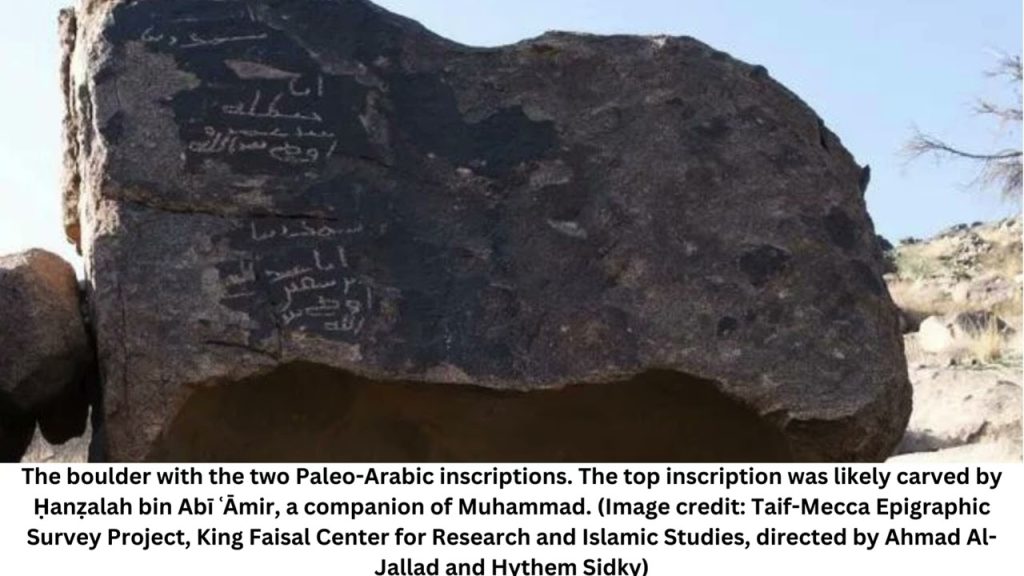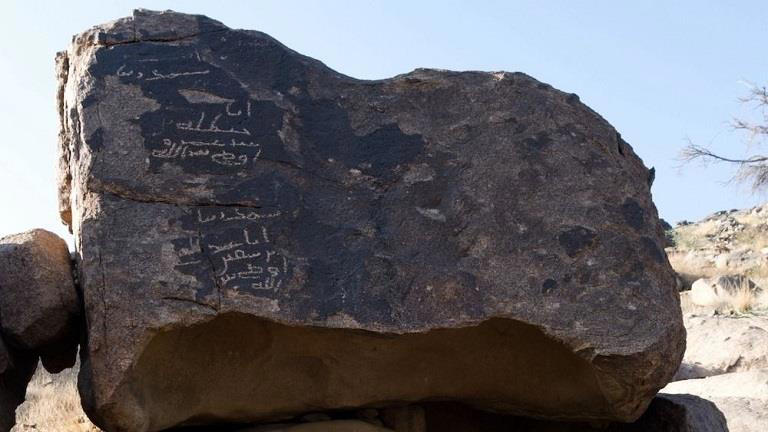FALCON POWERS – According to the scientific magazine Live Science, a new study has found that an ancient Arabic inscription on a rock near an abandoned mosque in Saudi Arabia may have been carved by the Companion (Sahabi) Hanzala ibn Abi Amir, who was martyred during his participation in the Battle of Uhud.
The inscription, analyzed by researchers in a new study published in the April issue of the Journal of Near Eastern Studies, is the second confirmed one associated with the Prophet Muhammad. This inscription is estimated to have been carved in the early 7th century, before Islam came to dominate the Arabian Peninsula, making it an important witness to the pre-Islamic period and the religious background of the local population.

As quoted by Live Science, Ahmad al-Jallad, a professor of Arabic studies at Ohio State University, said: “That time period is shrouded in mystery. These inscriptions provide a verifiable basis for writing a history based on evidence of that period.”
The inscriptions were written in the ancient Arabic script, which represents a pre-Islamic stage of the Arabic alphabet. The authors of the inscriptions identified themselves as Hanzala ibn Abd Amr and Abd al-Uzza ibn Sufyan.
The inscribed text reads: “In Your name, our Lord, I am Hanzala son of Abd Amr, I call to the fear of God,” and “In Your name, our Lord, I am Abd al-Uzza son of Sufyan, I advise [others] to the fear of God.”
The researchers studied the biography of Prophet Muhammad and Arab genealogical records, and found that the use of the ancient Arabic language easily places these inscriptions in the late 6th or early 7th century, which aligns closely with the timeline of Hanzala, the Companion who died in the Battle of Uhud in 625 CE.


